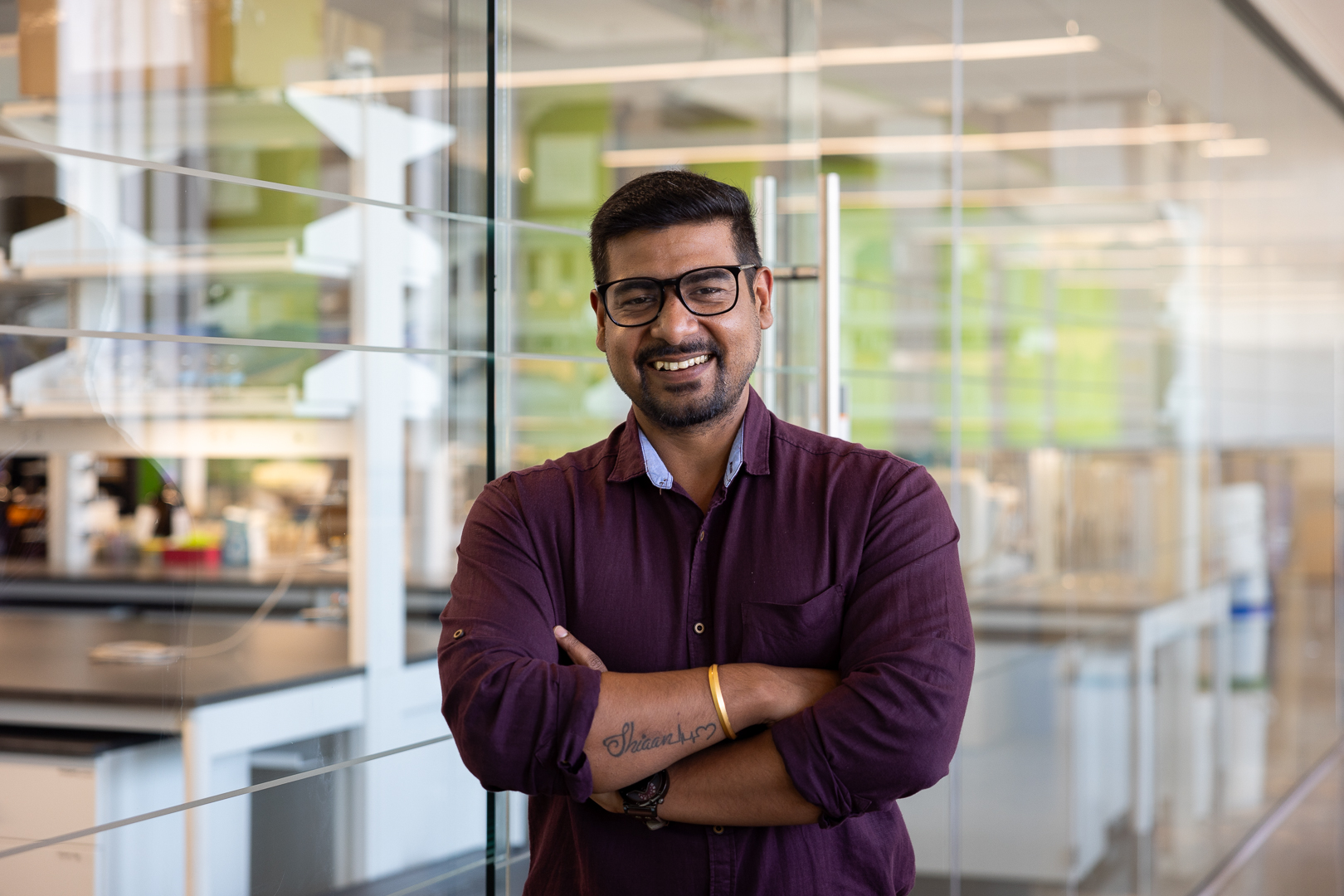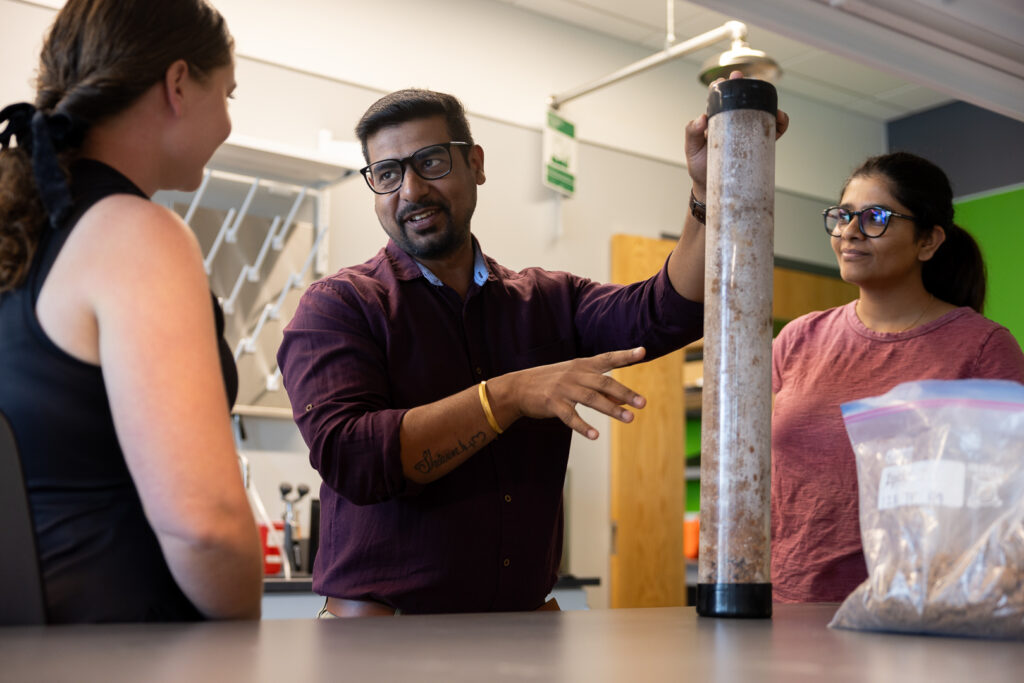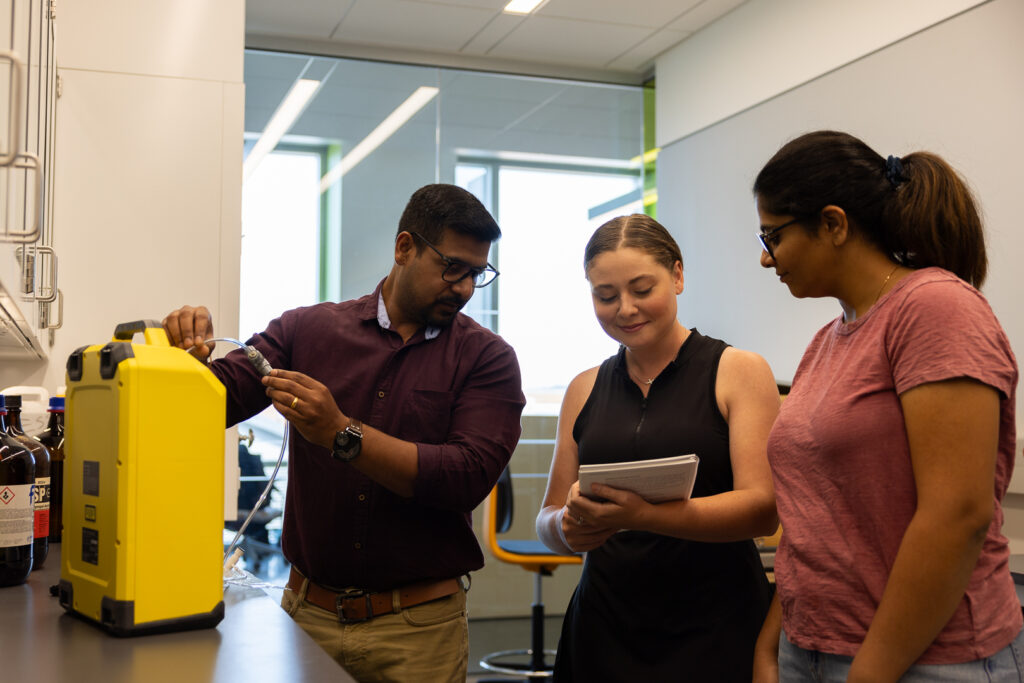
Assistant Professor of Soil Science Discovers Innovative Approaches to Mitigate Greenhouse Gas Emissions in Agriculture
Can you describe your career journey and how it led to your arrival at the University of Tennessee Institute of Agriculture?
I grew up in a small town in eastern India. I was born in a business family with no connection to agriculture. Surprisingly as a kid, I developed a strong interest in plants. Later on, I learned that soil is the foundation for plant growth. After high school, I got a Bachelor Science degree in agriculture and received a competitive fellowship to pursue a Master of Science degree in soil science in India. During my MS program, I was motivated to do research in understanding and quantifying soils’ role in climate change mitigation via sequestering atmospheric carbon and mitigating greenhouse gas (GHG) emissions. Excellent mentoring by my MS advisor at the Punjab Agricultural University in India played a catalyst role in my aspiration to pursue a research career. Since then, there was no looking back. I got my PhD in 2015 from Penn State and continued there as a postdoc. After that, I joined Michigan State University’s Kellogg Biological Station as a Research Associate.
I was fortunate to have multiple job offers for faculty positions and choosing UTIA was a no brainer decision due to their strong commitment to agriculture and sustainability. I was also excited about the soils faculty strength and expertise in the Department of Biosystems Engineering and Soil Science. Furthermore, after enjoying years of cold weather in the northeast and Midwest, my family was ready to enjoy the warmer weather in Tennessee!
What is your main research focus and why is it important?
My lab is focused on sustainable management of soil nitrogen cycle in agricultural systems. Nitrogen is a critical and expensive input for crop production which can also be an environmental pollutant. One important pathway of environmental nitrogen losses is the emissions of potent GHG nitrous oxide from fertilized soils. My research develops fundamental understanding of management and environmental controls of nitrous oxide emissions to identify mitigation opportunities under soil health practices such as no-tillage/reduced tillage, cover cropping, and animal manure management. We leverage process-based and machine learning models in predicting management impacts on nitrous oxide emissions.

This area of research is important as nitrous oxide concentration in the atmosphere is increasing and agriculture being the largest anthropogenic source of this important GHG – mainly attributed to nitrogen fertilizer use. Understanding the potential of various soil health practices in nitrous oxide emission mitigation is key towards designing climate-smart practices.
What has been your proudest moment while working in the UT Department of Biosystems Engineering and Soil Science?
I have had several proud moments while being an assistant professor in the department. First, success in highly competitive national and international funding on research projects is definitely a good feeling that boosts confidence and visibility. Second, witnessing students’ success and achievements in terms of receiving student grants, winning oral and poster competitions in professional meetings, and publishing in high-impact journals. The best job satisfaction is when the mentees come to me and say they enjoyed the project and learned a lot from the training.
What are some #RealLifeSolutions you have discovered through your research that can help improve the lives of Tennesseans and beyond?
As part of a USDA NIFA funded project, our team has shown a novel mechanism of forming anoxic (oxygen limitation) soil microclimate to promote nitrous oxide emissions when cover crop residues are incorporated into soils. This finding shifts the paradigm of nitrous oxide emission controls and is significant in managing cover crops for nitrous oxide mitigation. I am also excited about another NIFA project that is utilizing global data to develop AI models for accurate and efficient prediction of agricultural nitrous oxide emissions.
What is the most fulfilling aspect of the work you do?
The best part of my job that keeps me motivated is working with students and postdocs. No doubt this is often the most time demanding job but gives me immense satisfaction. It is a pleasure to see when mentees become comfortable in their out-of-comfort zone and take leadership in their research.

What is something about your field everyone should know?
Soils are not “dirt” if they are not on your doormat. Soil is the foundation of life and civilization. Our acts should nourish and protect soils, not the other way around!
What is a project you are currently working on that you are excited about?
Our lab is currently involved in several exciting projects. A notable one is integrating physics-based and machine learning models to predict agricultural soil nitrous oxide. This project builds on collaboration between UTIA, UT Knoxville, Penn State, Michigan State University, and several other global contributors who are providing high quality data for this modeling purpose.
How do you envision your field progressing within the next five years?
With the revolution of proximal, distal, and remote sensing technology, the field of soil science, biogeochemistry, and environmental science is rapidly evolving in terms of the speed of data generation and transmission which outpaces our ability to extract knowledge from the data. Deriving models and decision tools learned from this data deluge will be the key challenge in the coming years. Our lab’s research is addressing some of this challenge in some of our ongoing projects using artificial intelligence.
What do you like to do outside of work and/or what is a fun fact about yourself that your colleagues and students wouldn’t know?
I love to do paintings whenever I have time. I have two kids and like spending time with my family and cooking food for them. One fun fact about me is that I like to watch horror movies and then get scared to death and wake up in the middle of the night!
